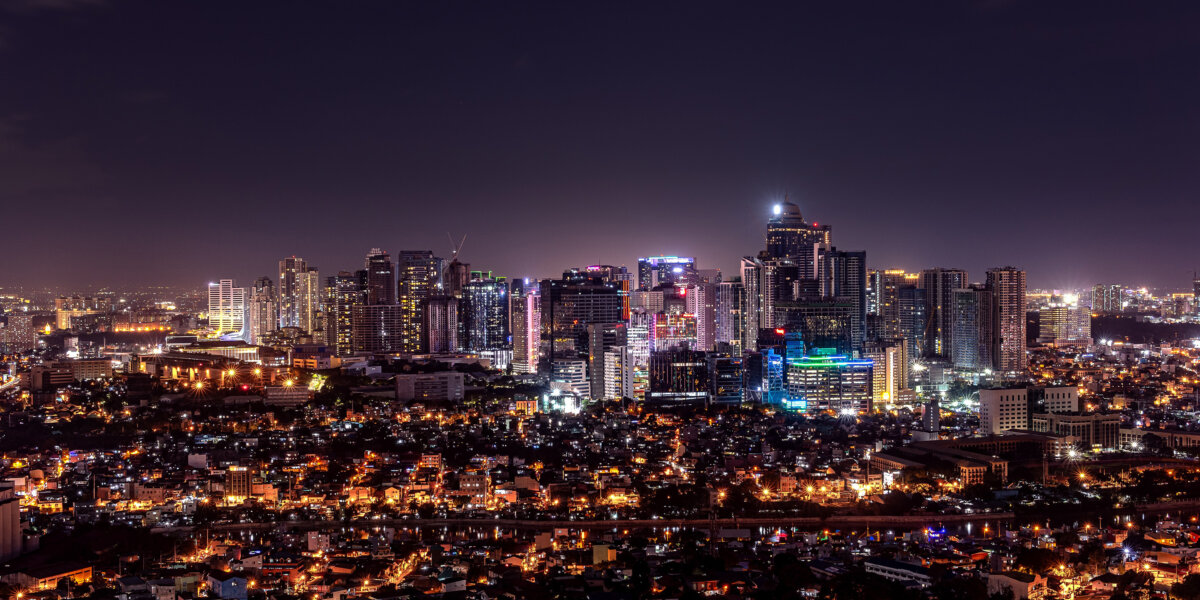
Manila, the bustling and vibrant capital city of the Philippines, is a city that truly never sleeps. With its rich history, cultural heritage, and modern developments, Manila has become a fascinating destination that offers something for everyone. From its iconic landmarks and historical sites to its buzzing nightlife and diverse culinary scene, there are endless things to discover in this cosmopolitan city. In this article, we will delve into 31 fascinating facts about Manila that will give you a deeper understanding and appreciation for this captivating metropolis. So, whether you’re planning a trip to Manila or simply want to expand your knowledge, join us as we explore the colorful tapestry of Manila’s past, present, and future.
Key Takeaways:
- Manila, the capital of the Philippines, is a bustling city with a rich history, vibrant culture, and diverse attractions, making it a must-visit destination for anyone interested in exploring a dynamic urban environment.
- From historic landmarks and delicious street food to colorful street art and lively festivals, Manila offers a unique blend of experiences that showcase the country’s rich cultural heritage and modern urban lifestyle.
The City of Manila is the capital of the Philippines.
Located on the eastern shore of Manila Bay, this vibrant city serves as the economic, cultural, and political hub of the country.
Manila is one of the most densely populated cities in the world.
With over 1.7 million people in just 16.56 square miles, Manila is a bustling metropolis that never sleeps.
Manila has a rich and diverse history.
From being a trading hub during the pre-colonial era to being colonized by the Spanish, American, and Japanese, this city has undergone significant historical events.
The Manila Galleon Trade made the city a global trading center.
During the Spanish colonial period, Manila served as a major port for trading goods between Asia, America, and Europe.
Intramuros is a historic walled city within Manila.
It was built by the Spaniards in the 16th century and contains various well-preserved colonial structures.
The Manila Ocean Park is a popular tourist attraction.
It offers visitors the opportunity to explore marine life through various exhibits and interactive shows.
Manila is known for its vibrant street food scene.
From balut (a fertilized duck embryo) to halo-halo (a refreshing dessert), the city offers a wide variety of culinary delights.
The University of Santo Tomas in Manila is Asia’s oldest existing university.
Founded in 1611, it has a rich academic tradition and has produced numerous notable alumni.
Manila has a tropical monsoon climate.
This means that it experiences a wet season from June to November and a dry season from December to May.
Manila Bay is famous for its beautiful sunsets.
Many locals and tourists gather along the baywalk to witness the stunning display of colors as the sun sets over the water.
The Pasig River runs through the city.
It used to be a major transportation route during the Spanish colonial period, but it is now known for its pollution challenges.
Manila is home to numerous historical churches.
Examples include the Manila Cathedral, San Agustin Church, and Quiapo Church, which showcase stunning architectural designs from the colonial era.
The Manila Hotel is one of the city’s iconic landmarks.
It has hosted numerous notable guests and has played a significant role in the country’s history.
Manila is a melting pot of different cultures.
Its diverse population is composed of Filipinos from different regions, as well as immigrants from various countries.
The Manila Film Center is a famous landmark.
It was built to host the 1982 Manila International Film Festival and is known for its unique architecture.
Manila is a hub for shopping and entertainment.
With numerous malls, theaters, and entertainment complexes, there is always something to do and explore in the city.
Jeepneys are a popular mode of transportation in Manila.
These colorful and uniquely designed vehicles are a symbol of Philippine culture and heritage.
The National Museum of the Philippines is located in Manila.
It houses a vast collection of art, artifacts, and natural history exhibits that showcase the country’s rich cultural heritage.
Manila has a thriving music and arts scene.
From local bands performing in pubs and clubs to museums and galleries displaying various artworks, the city celebrates creativity.
Rizal Park, also known as Luneta Park, is a historical urban park in Manila.
It is dedicated to the country’s national hero, Dr. Jose Rizal, and is a popular spot for leisure and entertainment.
Manila has a vibrant nightlife.
From trendy bars to night markets, the city offers a wide range of options for those seeking nighttime activities.
The San Agustin Museum houses religious art and artifacts.
It is located within the San Agustin Church complex and offers visitors a glimpse into the country’s religious history.
Manila hosts various festivals throughout the year.
Examples include the Manila International Film Festival, the Kalesa Festival, and the Feast of the Black Nazarene.
The Manila Baywalk is a popular spot for leisurely strolls.
With a view of the bay, it offers a refreshing escape from the busy city life.
Manila is home to several prestigious universities.
Aside from the University of Santo Tomas, other notable institutions include the Ateneo de Manila University and De La Salle University.
The Manila Bulletin is one of the oldest English-language newspapers in the Philippines.
It has been providing news and information to the public since 1900.
The Manila Metropolitan Theater is an architectural masterpiece.
Currently under restoration, it is known for its stunning Art Deco design and was once a center for performing arts.
Manila has a vibrant street art scene.
Throughout the city, you can find colorful murals and graffiti that showcase the creativity of local artists.
Binondo, located in Manila, is the oldest Chinatown in the world.
It is known for its vibrant Chinese culture, delicious cuisine, and traditional Chinese architecture.
The Manila International Airport, also known as Ninoy Aquino International Airport, is the primary gateway to the Philippines.
It connects Manila to numerous international destinations across the globe.
Manila is a cultural hub.
With its museums, theaters, and cultural events, the city celebrates and preserves the rich cultural heritage of the Philippines.
Conclusion
In conclusion, Manila is a vibrant and diverse city that offers a plethora of experiences for locals and tourists alike. From its rich history and culture to its astonishing skyline and modern amenities, Manila has something for everyone. Whether you’re interested in exploring its historical landmarks, indulging in delicious Filipino cuisine, or simply immersing yourself in the lively atmosphere, Manila has it all.With its warm and friendly residents, Manila provides a warm welcome to visitors from all over the world. The city’s unique blend of traditional and contemporary influences creates a captivating ambiance that is hard to resist. Whether you’re strolling along the picturesque streets of Intramuros, enjoying a sunset at Manila Bay, or shopping at vibrant markets like Divisoria, the energy and charm of Manila are sure to leave a lasting impression.So, if you’re looking for a destination that is both culturally rich and modern, make sure to put Manila on your travel list. This bustling metropolis promises an unforgettable experience filled with history, adventure, and the warm hospitality of its people.
FAQs
1. What is the population of Manila?
The population of Manila is approximately 1.78 million people.
2. What is the best time to visit Manila?
The best time to visit Manila is during the dry season, which is from November to April. This period offers pleasant weather with less chance of rain.
3. Are there any famous landmarks in Manila?
Yes, there are several famous landmarks in Manila, including the historic walled city of Intramuros, Rizal Park, Manila Cathedral, and San Agustin Church.
4. Is Manila a safe city to visit?
Like any major city, it’s important to exercise caution and be aware of your surroundings. Overall, Manila is considered safe for tourists, but it’s always recommended to take necessary precautions and avoid isolated areas at night.
5. What types of cuisine can I try in Manila?
Manila offers a wide variety of cuisine, with Filipino food being the highlight. From savory dishes like adobo and sinigang to mouthwatering desserts like halo-halo, Manila is a food lover’s paradise.
6. Are there any beaches near Manila?
Yes, there are several beautiful beaches near Manila, including Batangas, Subic, and Zambales. These beaches are perfect for relaxation and water activities.
7. How can I get around Manila?
Manila has various transportation options, including taxis, ride-sharing services, jeepneys (local public transportation), and the Metro Rail Transit (MRT) system. It’s advisable to plan your routes in advance and consider the traffic conditions.
8. Can I visit Manila on a budget?
Absolutely! Manila offers a wide range of budget-friendly accommodations, affordable street food, and inexpensive transportation options. You can explore the city without breaking the bank.
9. What are some popular shopping destinations in Manila?
Some popular shopping destinations in Manila include SM Mall of Asia, Greenbelt, Divisoria Market, and Bonifacio High Street. These places offer a wide variety of retail options, from high-end brands to bargain finds.
Remember to replace “Manila” with the correct city name if you choose a different title.
Manila's vibrant culture, history, and urban landscape make it a captivating destination for travelers and locals alike. If you're looking to explore more of the Philippines' bustling capital region, check out our articles on the exciting AsiaPOP Comicon Manila, the diverse city of Caloocan, and the thriving business district of Makati. Each offers unique experiences and insights into the rich tapestry that makes up Metro Manila.
Was this page helpful?
Our commitment to delivering trustworthy and engaging content is at the heart of what we do. Each fact on our site is contributed by real users like you, bringing a wealth of diverse insights and information. To ensure the highest standards of accuracy and reliability, our dedicated editors meticulously review each submission. This process guarantees that the facts we share are not only fascinating but also credible. Trust in our commitment to quality and authenticity as you explore and learn with us.


